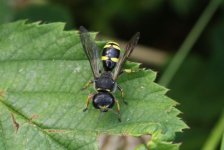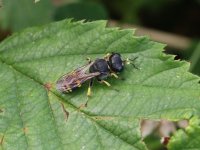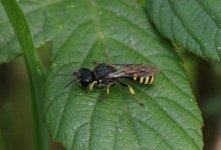DoghouseRiley
Well-known member
Hi All
I saw a couple of Ectemnius wasps on the edge of woodland, at a Ketton NNR. Much of which is
old quarry workings.
I know these are not easy to identify from photographs but one of them in particular stood out
with a wide black band across the abdomen. I think the first two pics might be Ectemnius rubicola.
The third one, I am not sure of at all.
Could someone please take a look and advise me?
Yours, Gareth
I saw a couple of Ectemnius wasps on the edge of woodland, at a Ketton NNR. Much of which is
old quarry workings.
I know these are not easy to identify from photographs but one of them in particular stood out
with a wide black band across the abdomen. I think the first two pics might be Ectemnius rubicola.
The third one, I am not sure of at all.
Could someone please take a look and advise me?
Yours, Gareth







